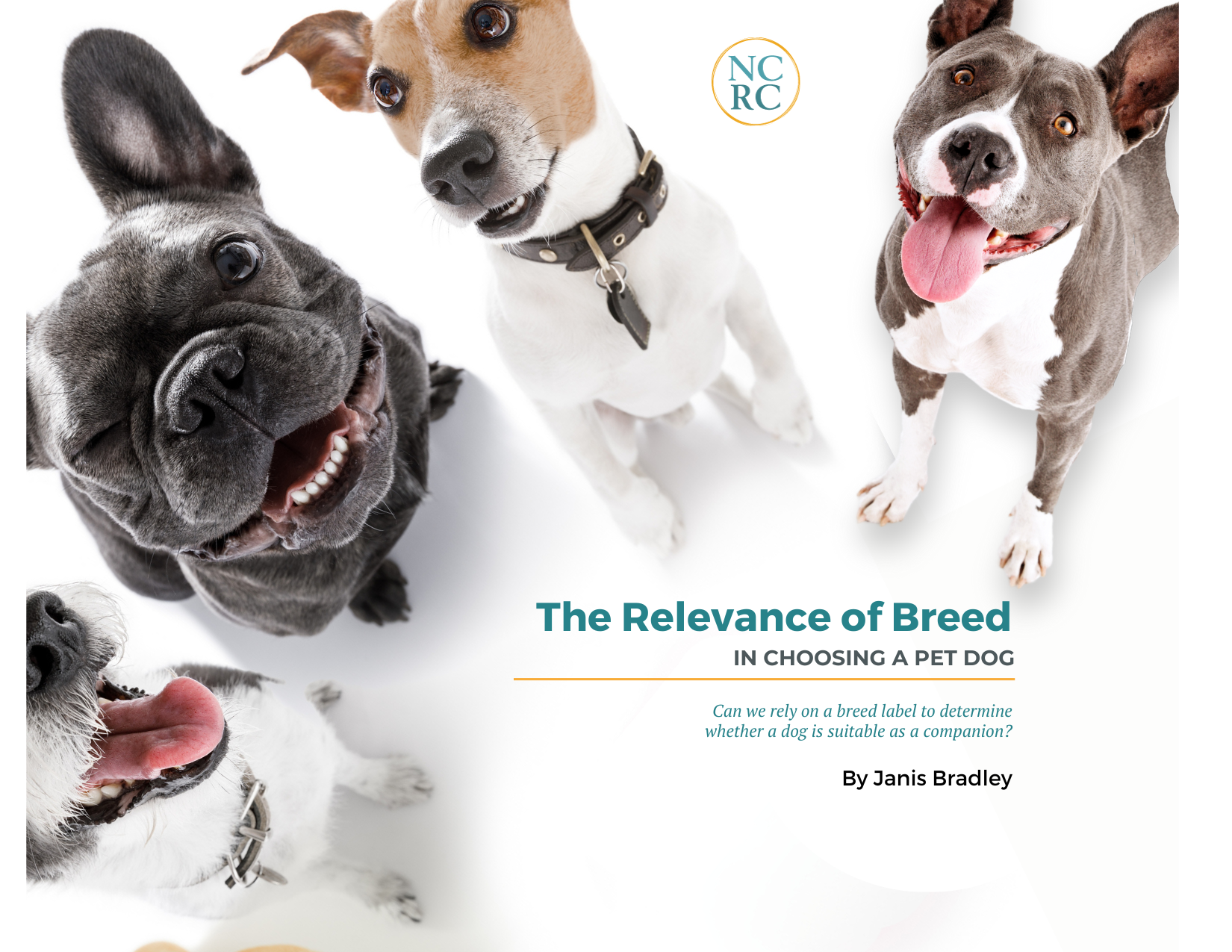In the 1960’s, John Paul Scott and John L. Fuller showed that mixed breed dogs may bear little or no resemblance to their purebred ancestors.[i] In 2009, Dr. Victoria Voith and colleagues from Western University published a short report indicating a low agreement between the identification of breeds of dogs by adoption agencies and DNA identification of the same dogs.[ii]
The Maddie’s® Shelter Medicine Program at the University of Florida’s College of Veterinary Medicine has also been looking systematically into the problem of visual breed identification of dogs of unknown origin. A survey conducted at four Florida animal shelters confirmed the unreliability of visual breed identification, thus calling into question yet again its use for dog adoption, lost and found, and regulation.[iii]
The Maddie’s® Shelter Medicine Program conducted a new and expanded survey during the summer of 2012.[iv] An array of dog experts – breeders, trainers, groomers, veterinarians, shelter staff, rescuers and others –offered their best guesses as to the breeds in the dogs in a series of photographs. More than 5,000 completed the survey. Their visual assessments were then compared to DNA breed profiles of the dogs.
Each dog in the survey had at least 25% of a single breed in its DNA profile. A response was considered accurate if it named any of the breeds DNA analysis had detected in the dog, no matter how many other breeds had been detected, and whether or not the breed guessed was a predominant breed in the dog, or only had been detected in a trace amount. Since, in almost every dog multiple breeds had been detected, there were lots of opportunities to be correct.
(You can view pictures of all 100 dogs in the study, their actual DNA breed results, and what survey respondents guessed their breeds were here: http://sheltermedicine.vetmed.ufl.edu/library/research-studies/current-studies/dog-breeds/dna-results/)
Given the findings of Scott and Fuller, Dr. Victoria Voith, and the earlier Maddie’s® Shelter Medicine Program survey, the results were unsurprising. The 5000+ responders were only correct – that is, named at least one of the breeds detected by DNA analysis – less than one-third of the time. And no profession did much better than any other. Every profession’s responses, in total, were correct less than a third of the time.
In addition, from the variety of guesses associated with almost all of the dogs, it is clear that these experts did not agree with each other when they looked at the same dog.
To date, we are not aware of any survey or controlled study that has returned a result different from that obtained by Dr. Voith and the two surveys conducted by the University of Florida’s College of Veterinary Medicine. Nor do we expect to. These results corroborate the work that Scott and Fuller published almost 50 years ago. They are in turn supported by the reports of geneticists that a remarkably small amount of genetic material exerts a remarkably large effect on the size, shape, etc. of a dog.[v]
These uncontroverted reports argue that it is long past time for dog experts to accept the inescapable limitations of visual breed identification of mixed breed dogs of unknown origin. One step in the right direction is a new report by two veterinarians and an attorney that has appeared in the Journal of the American Veterinary Medical Association. These authors recommend that veterinarians will better serve their clients and their clients’ pets if they describe these mixed-breed dogs without assigning a breed, adopting a “single non-breed based term to describe all dogs of unknown parentage.”[vi]
This sound advice for veterinarians is also applicable to animal sheltering, animal control, and public policy. We have placed an entirely unwarranted confidence in shelter intake data, adoption policy and practices, dog bite studies, bite reports and news accounts that either presume to predict a dog’s future behavior based on breed, or to relate incidents to breed. Visual breed identification did not only become inaccurate as a result of the surveys mentioned above, or even when Scott and Fuller published Genetics and the Social Behavior of the Dog back in 1965. Rather, these findings call our attention to what has always been the case.
What Dr. Voith pointed out to the American Veterinary Medical Association in 2009 bears repeating:
“The discrepancy between breed identifications based on opinion and DNA analysis, as well as concerns about reliability of data collected based on media reports, draws into question the validity and enforcement of public and private policies pertaining to dog breeds.”[vii]
SOURCES & NOTES
[i] Scott, J. P., & Fuller, J. L. (1965). Genetics and the Social Behavior of the Dog. Chicago: Univ. of Chicago Press.
[ii] Voith, V., Ingram, E., Mitsouras, K., & Irizarry, K. (July 2009). Comparison of Adoption Agency Identification and DNA Breed Identification of Dogs. Journal of Applied Animal Welfare Science. 12(3). 253-262.
[iii] Olson, K. R., Levy, J.K, and Norby, B. (2012). [Poster] Pit Bull Identification in Animal Shelters. Retrieved from http://www.maddiesfund.org/Resource_Library/Incorrect_Breed_Identification.html
Levy, J.K. (2012). DNA and Survey Results: What Kind of a Dog Is That? Retrieved from http://sheltermedicine.vetmed.ufl.edu/library/research-studies/current-studies/dog-breeds/dna-results/
[iv] This project was funded in part by a grant from the National Canine Research Council.
[v] Boyko AR, Quignon P, Li L, Schoenebeck JJ, Degenhardt JD, et al. (2010) A Simple Genetic Architecture Underlies Morphological Variation in Dogs. PLoS Biol 8(8): e1000451. doi:10.1371/journal.pbio.1000451
[vi] Simpson, R.J., Simpson, K.J., VanKavage, L. (November 2012). Rethinking Dog Breed Identification in Veterinary Practice. Journal of the American Veterinary Medical Association, 241(9).
[vii] Voith, V. (2009). A Comparison of Visual and DNA Identification of Breeds of Dogs. Published in Proceedings of Annual AVMA Convention, July 11 – 14, 2009 Seattle Washington.








